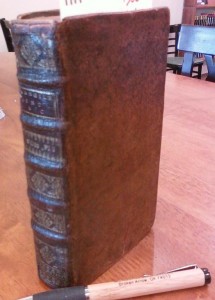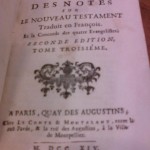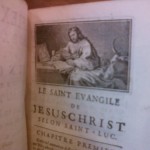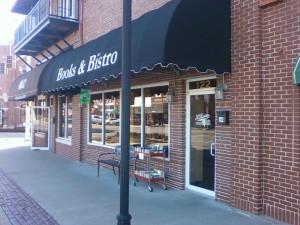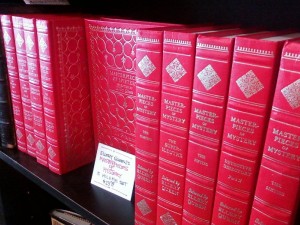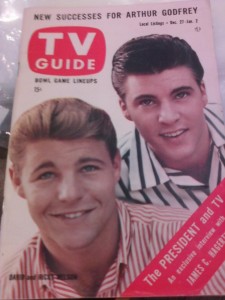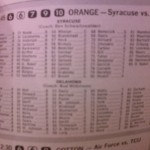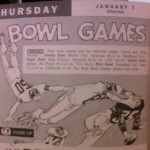Here’s how old this book is: When it was published in Paris, Benjamin Franklin was still alive and living in the American colonies. He was eight years old.
1714 was the year that King George I ascended the throne. He was the king of Great Britain and Ireland, although he was born in Hanover (now in Germany, but back then it was the Kingdom of Hanover – sort of like the Land of Oz). The King’s English was different in that time, too: the King spoke German.
In the American Colonies – there weren’t yet thirteen, as South Carolina had not been formally recognized as a royal colony (1729), and in 1714, tea was introduced for the first time. It was unsweetened, just so you know.
There were not a lot of novels being published in the colonies in 1714; in fact, it wasn’t until young B. Franklin grew up that the first truly successful newspaper was first printed – his Pennsylvania Gazette in 1728. It is true that a printing press was brought from Europe in the 1630s to be set up at Cambridge, Massachusetts, where a few books were published over the years, but most colonists were just struggling to survive and didn’t have a lot of free time to kick back with an adventure story.
In fact, through the 1600s it is fair to say the publishing was conducted primarily by Cambridge’s Samuel Green, William Bradford in Philadelphia, and Maryland’s William Nuthead. (Don’t you know he suffered for his surname?) Any book printed at the time would be expensive to acquire, and the contents were confined to religious reading and almanacs. People listed books in their wills to specify who should receive which volume.
The little book in the image (you can click the picture for a larger view) is about the size of a church hymnal, and from my failing high school French, the title page appears to indicate the contents are Moral Reflections with Notes on the New Testament. Light, after-dinner reading. For a book approaching its 300th birthday, it is in surprisingly good shape. In fact, its in great shape compared to a lot of used hardbacks that come into the shop.
As with many religious books of the 17th through the 19th centuries, the artwork consists of line engravings, since photography as we know it did not exist until the mid-1800s.
I can’t say what the book cost when it first rolled off the printing press in Paris, that day in 1714, but at the modest (relatively speaking) price it is tagged with here in the bookshop – adjusted for inflation – it would have cost a colonist about $23. Compare that with the $13 dollars that would have been spent for a brand new Brown Bess smooth bore musket.
Little surprise that – for the price – muskets easily outsold anything offered in a leather binding with paper pages in between!
